Home \ Low Carbon School Pilot Project \ Explore sustainable living and learn about low-carbon behaviors in everyday
What is your ideal low-carbon lifestyle?
In addition to energy saving and green travel, another word that is mentioned frequently is “sustainability”.
What kind of “sustainability”will make people in their daily life form habits, so that low-carbon environmental protection has become a way of daily routine.
On January 11, 2023, we followed the EU HPP Yunnan Low Carbon School Pilot Project team to Damoyu, a small village in the western suburbs of Kunming, to find out more.
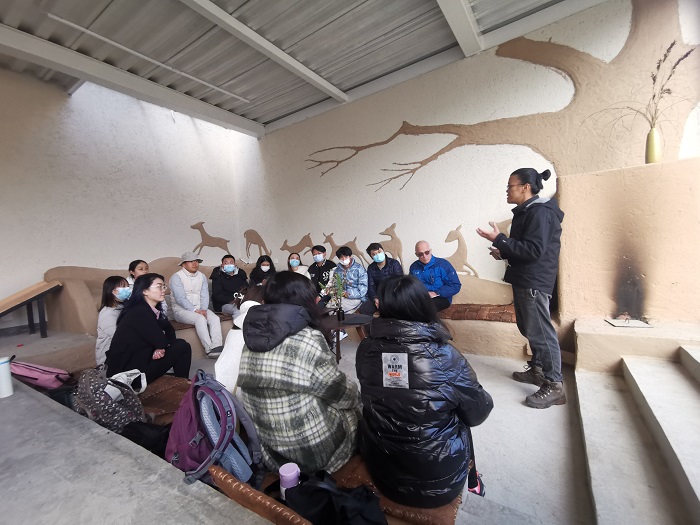
01 Returning to the countryside, from a 10-year old abandoned house to a “symbol” of natural architecture
How did this old house, which covers about one acre and has been unoccupied for ten years, become a landmark?
During the renovation of the house, the new owner did not follow the usual architectural style, procuring building materials and starting the construction in a big way.
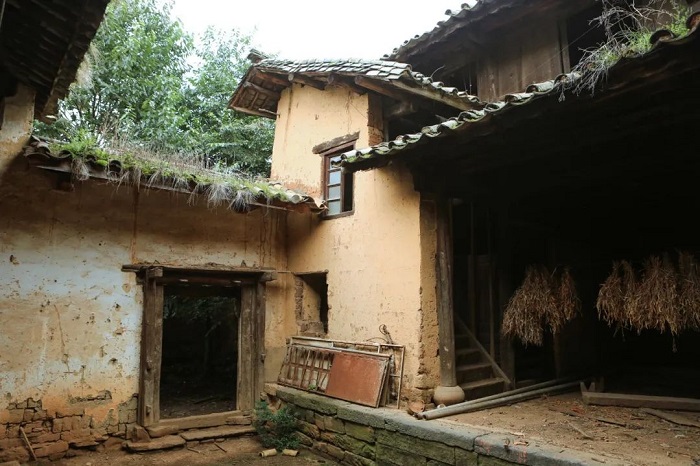
Sustainability means that you have to learn to think about how to live with nature. On this basis, the homeowners transformed the overall contours of the house with natural, recyclable materials that could be returned to the land, such as clay, sand, stone and wood, and were all available locally in the village. The overall wooden structure of the new house follows the original style of the old house, including the roof tiles and the stones for the footings of the walls. The walls, on the other hand, are built using a mixture of local loess, pine needles and rice husks.
In addition, for drainage, sanitary ware, greenery, heat preservation and sound insulation, the details are handled and adjusted according to the law of how to come from nature and go back to nature, such as using corn stalks crushed and added to clay to achieve sound insulation and heat preservation, adding glass bottles to the walls to increase light, and separating wet and dry feces ecological dry toilet, etc.
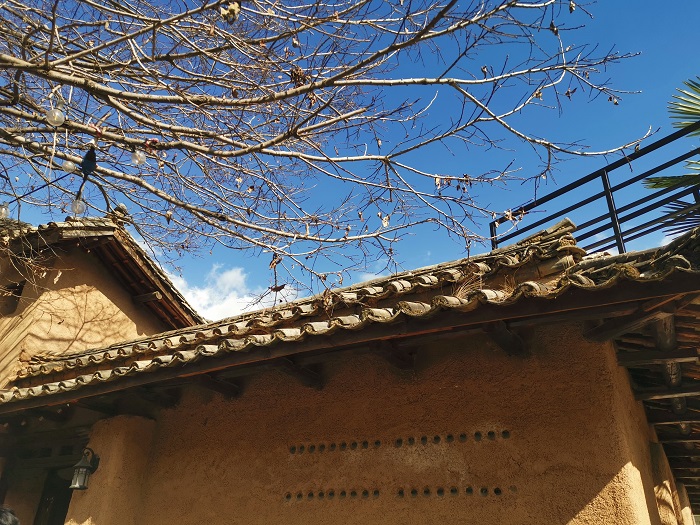
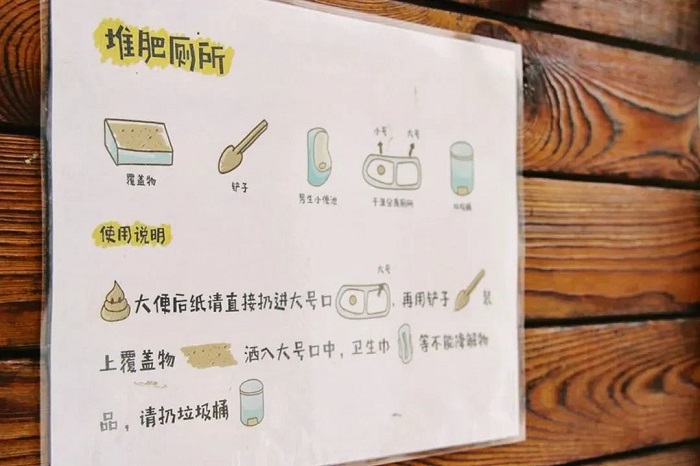
Returning to nature. We witnessed the sustainable concept of low carbon and environmental protection from a column and a tile of the new house.
02 Imagine and create, turning discarded materials into reusable treasures
What will you do when faced with branches, fallen leaves and abandoned wood?
"Pick it up as you go and throw it to the curb so that the person behind you doesn't trip over it." This is the answer most people would give straight away. But for a low-carbon environment, this is not the best practice.
In the village, we saw people who would specifically collect these discarded wooden materials, and tree trunks and branches, take them home, and after thinking about them carve them into reusable items, realizing the low-carbon environmental protection - sustainable concept.
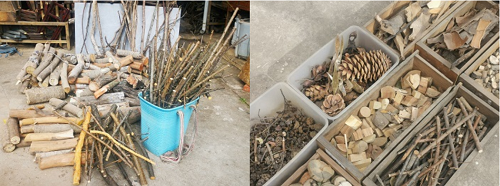
A branch, a piece of wood, a pine cone, a piece of bark......We can't imagine what it all can be used to do.
After the teacher's guidance and reflection, everyone participated in the hands-on activity of turning waste into treasure.
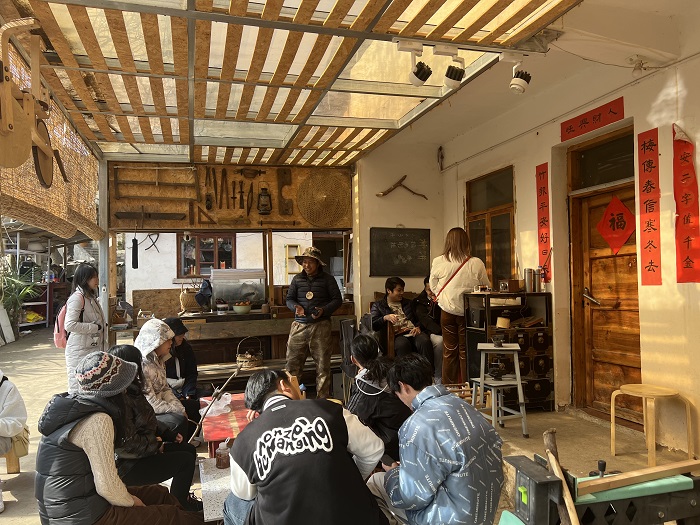
Please enjoy everyone's handiwork:
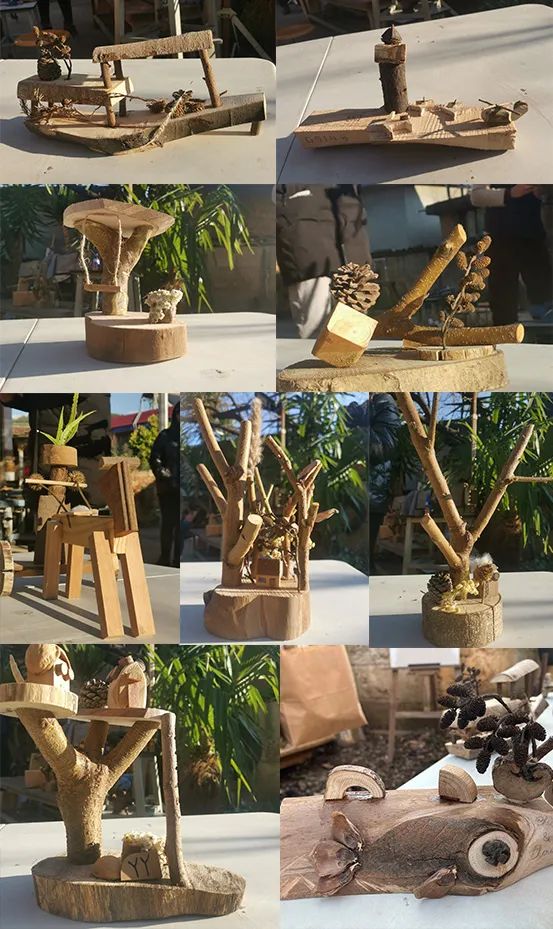
03 You may be just one step away from a low-carbon life: thinking
Facing different individuals and needs, everyone has different choices. Today's society has seen the emergence of many groups who are not bound by custom, but are brave enough to think and innovate, exploring a way of living in symbiosis with nature, while practicing the concept of low carbon and environmental protection.
When faced with what to eat, what to wear, what kind of house to live in the future, we choose to consume, but forget to stop and "think".
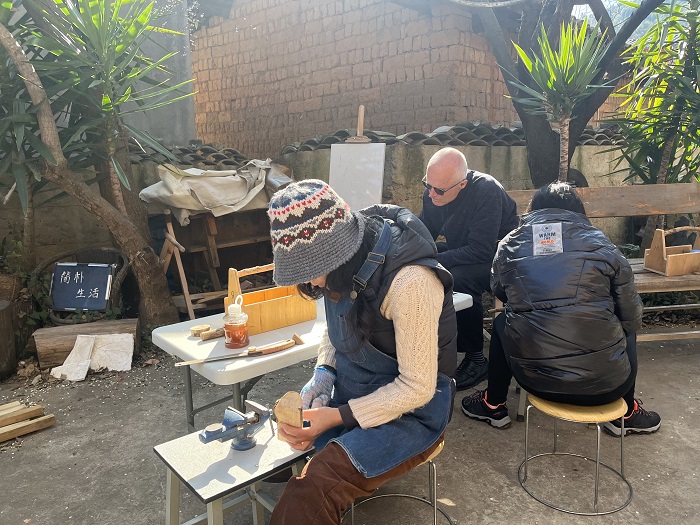
Thinking could often bring us a lot of creation and avoids those unnecessary consumption and waste.
I can make a dress with my hands; I can live normally without water and electricity; I can build a house by using everything in nature; and I cannot throw away what I don't need, it may be reused by me. All these things I want have been turned into reality by the new local villagers.
The resources that can be used by human beings are not inexhaustible. After continuous reflection, people in this village started to create a way of "sustainable living" based on low carbon life and environmental protection.
We have been advocating the concept of low carbon and environmental protection, and now it's time to bring it into our lives.
Project introduction
The Yunnan Low-carbon Schools Pilot Project is funded by the European Union and implemented by the People to People Foundation (Spanish member of HPP) in cooperation with FAIHPP (Switzerland) Yunnan Representative Office, Yunnan Academy for Science and Technical Information, Southwest Forestry University, Green Kunming (Kunming Environmental Popular Science Association) and Kunming Good Deed Public Welfare Community Development Service Center with a project cycle from January 1, 2020 to December 31, 2023. The project begins by increasing partners’ awareness and advocacy on climate change mitigation and environmental protection, and then raises climate change awareness among 600 schools, 70,000 students and teachers, determines the emission baseline through emission source calculations, and then implements emission reduction work in 50 Carbon Compliant Pioneer Schools. The project uses science, technology, innovation and other means to respond to “climate action” to accelerate environmental sustainability and promote the transition from green campuses to low-carbon and carbon-neutral campuses.

The project is funded by the European Union

This project is supported jointly by the European Union and the Humana People to People Foundation (Humana People to People Spanish members).
The opinions expressed here are those of the author and have nothing to do with the position of the funder.